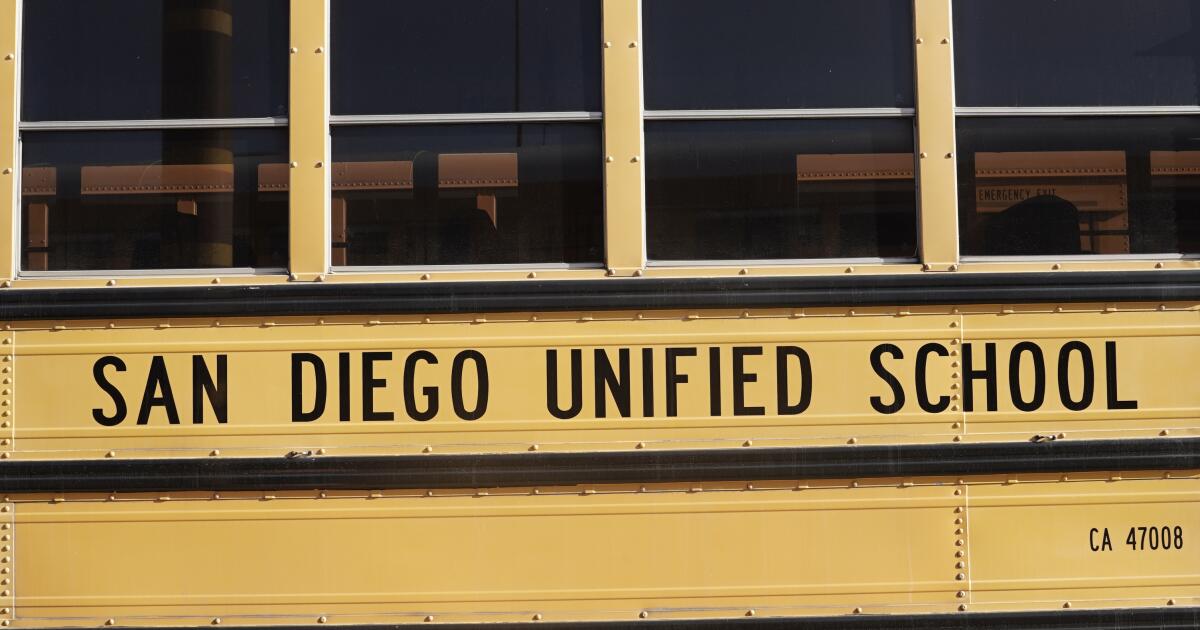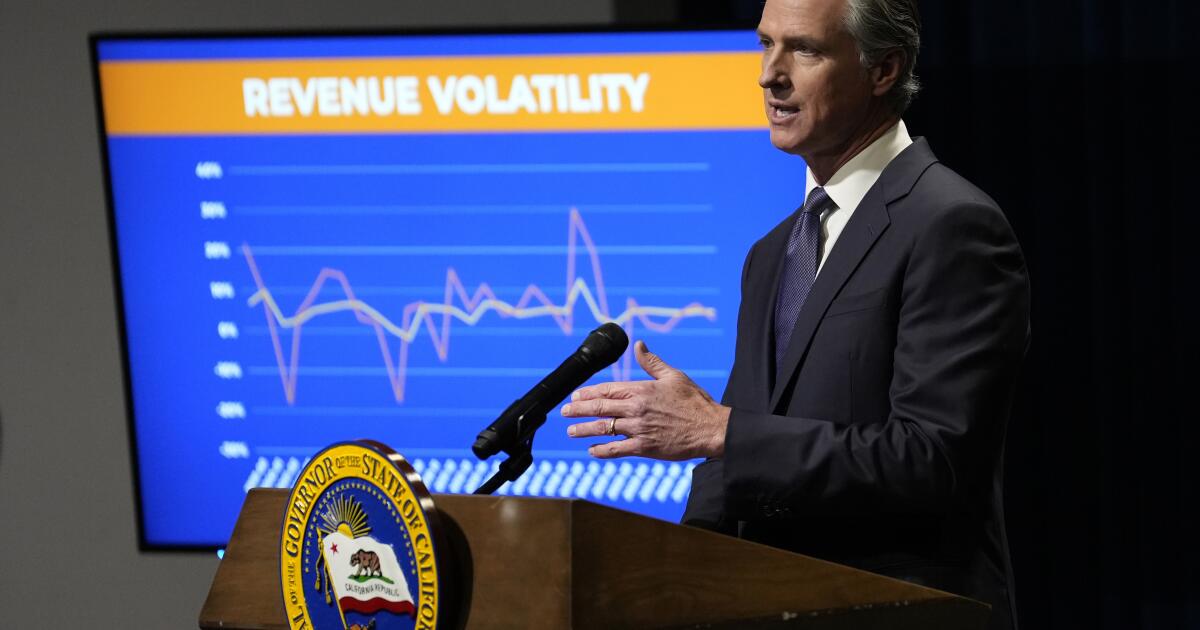California lawmakers have passed a landmark law requiring schools to devise plans to restrict or ban student cellphone use on campus, with the goal of eliminating classroom distractions and harmful use of social media.
Gov. Gavin Newsom is expected to sign the bill, which would require 1,000 school districts, charter schools and county offices of education statewide to draft their policies by July 1, 2026.
“It’s not overly prescriptive,” said Assemblyman Josh Hoover (R-Folsom), who introduced the bill. “Obviously, we require districts to take action by passing a policy to limit smartphone use, but we don’t tell them exactly how they have to do it.”
Many school districts have already created their own policies to restrict phone use in and out of class, with varying degrees of success and ongoing adaptation. In the battle to determine what works and what doesn’t, the law holds promise, but it could also lead to a confusing policy landscape in districts across the state. And in the case of schools that have adopted bans, some crafty students are finding ways around them.
Below are the details of California's Phone-Free Schools Law:
What does the bill mandate?
The bill builds on Assemblyman Al Muratsuchi’s (D-Torrance) 2019 law that allowed school districts to adopt a policy to limit or ban smartphone use in schools. Under the new measure, restrictions would be required.
Schools must consult with students, parents and educators to develop their policies and update them every five years. The goal is to support “student learning and well-being” in accordance with “evidence-based practices regarding smartphone use,” the measure says.
The policy authorizes schools to use tools such as lockers or locked phone cases to enforce the policy when students are on campus or under the supervision of a district employee, such as on a field trip.
The bill also clarifies that schools cannot access, collect or monitor a student's online activity. The measure does not set the rule, but it does require school districts to establish their own restrictions or prohibitions.
What happens in case of an emergency during the school day?
Students will still be able to use their phones during an emergency. However, the legislation does not say that the phone must be the student's device, and school districts must decide what constitutes an emergency.
Los Angeles Unified Superintendent Alberto Carvalho said the district is working on what scenarios will be defined as emergencies and how it can provide students with “reasonable access” to phones in those circumstances.
Sen. Ben Allen (D-Santa Monica), a co-sponsor of the bill, said policies can be different for different emergencies, such as an active shooter or an earthquake. Still, he understands the desire of students and parents to get online after an emergency.
Are there any other exceptions?
The law prohibits schools from banning smartphones when a licensed physician or surgeon decides that a phone is vital to a student's health or well-being. Phones may also be allowed if they are necessary for a student's individualized education program.
Students learning English, for example, may rely on their devices to learn, just as students with diabetes may need a phone to monitor their glucose levels, Carvalho said.
The law also gives teachers and administrators permission to override their school district's policy, thereby creating their own.
How will schools pay for phone lockers or other monitoring tools?
A big concern with the ban is equity, especially when some schools may not be able to afford tools to help them enforce it.
“For a school as small as ours, the cost would be about $20,000,” said Liz Ackerman-Hicks, principal of the Girls Academic Leadership Academy, of her decision not to implement the popular Yondr bags, which use magnets to close and open pouches that hold phones. “That could pay for a lot of tutoring and extracurricular activities.”
The new LAUSD policy will go into effect in January, and Los Angeles school board member Nick Melvoin said the district is considering reimbursing schools that have shouldered that cost and paying for implementation in the future.
Because the law is a state mandate, schools can apply for state reimbursement or use their existing grants to pay for services required by law.
What do educators think about the law?
While teachers have maintained that the ban on mobile phones has been beneficial to their classes, they stress that it cannot be an unfounded order. It is particularly important, they say, that the burden of the app does not fall on them and take away from teaching time.
David Goldberg, president of the California Teachers Association, said the union supports restricting smartphone use on campus, but added that districts should consult with students and their families when developing their policies.
“Educators care deeply about the well-being of our students and their families and should be involved in decisions about changes to our school communities,” Goldberg said in a statement to The Times.
Educators like Ajaya Ram, a teacher at KJ STEM Academy, added that if parents agree to the policy, they can also take steps to limit students' phone use, such as setting parental controls that restrict access to certain apps during the school day.
The California School Boards Association, however, opposes the bill. Spokesman Troy Flint said the measure takes authority away from school district leaders, who can do their own research and decide that limiting or banning phones would not benefit their students.
The group intends to ask Newsom to veto the bill, but if it passes, Flint said they will support school districts and monitor the law’s impact and potential unintended consequences.
What do students say?
While students understand the reasoning behind stricter policies (and agree that phones are a distraction), many question whether an outright ban is the solution.
If students don't have a say in new policies, schools may struggle to comply, said students who attended California Superintendent of Public Instruction Tony Thurmond's Closing the Digital Divide Task Force meeting on Tuesday.
“For my peers, this meant they definitely struggled a lot because the Yondr bags just came out of nowhere and we didn’t really understand what was going on,” said an eighth-grader at Bayside Academy, an elementary and middle school in San Mateo. “Then they focused on trying to find ways around the policy and figuring out how not to use the bags.”
If students saw the policy as a consensus, rather than a punishment, many more would have joined in. She also recommended that schools offer positive behavior incentives, such as bag-free days, to reward student compliance.
High school students on the panel said elementary, middle and high school offer “radically different” environments that must be taken into account when creating phone policies.
“The state of California has 2 million high school students,” said Mia George, a senior at Folsom High School. “If you’re going to tell those 2 million kids what to do from ninth through twelfth grade, when will they be able to make that decision themselves?”
Trinidad Menchu, a recent graduate of Dorsey Senior High, said her phone helps her focus during independent work because it allows her to listen to music. She added that her teachers don't often lead by example and that during that time they spend time on their own phones.
Sadie and Piper Hoodenpyle, students at Girls Academic Leadership Academy, added that phones can be useful for taking pictures of lecture slides, filming Spanish-language soap operas and checking their weight-lifting form. They have also been a lifesaver in emergencies, they added, making sure their brother is OK and keeping their parents informed.
The Bayside eighth-grader recommended that schools place Yondr magnets in every classroom so students can unlock their phones in case of an emergency.












